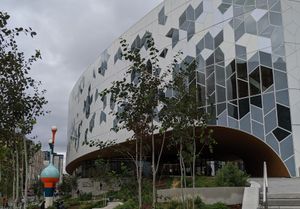When talking about a well-defined, discrete problem, maybe one-stop-shop expresses a useful notion. Or when the entry point is so wide as to seem comprehensive .. as with Amazon or Google.
However, we are more often dealing with situations which fall between these poles.
And there, one-stop-shop more often seems to express a forlorn aspiration, sadly out of step with the realities of user behavior and expectation. In fact, sometimes its introduction seems to be a substitute for thinking about what is really needed.
One-shop-stop is probably a better way of characterizing what is provided. We are sometimes satisfied by one shop; many times we are not, we want to create a plural shopping experience. (Look carefully – that is one-shop-stop.)
For many information applications it is difficult to arrange all the resources that might be of use, or to anticipate possible needs, or to presume that they are the favored site of integration for the user. They are part, only, of a landscape of resources, which may be configured in different ways by the user.
Closely related to the one-stop-shop discussion is the YAP syndrome: the Yet Another Portal syndrome. Put together the aspiration to meet all needs in one place, and the unlikelihood of achieving this aspiration, and you end up with several one-stop-shops. A proliferation of portals.
Share
More from LorcanDempsey.net



